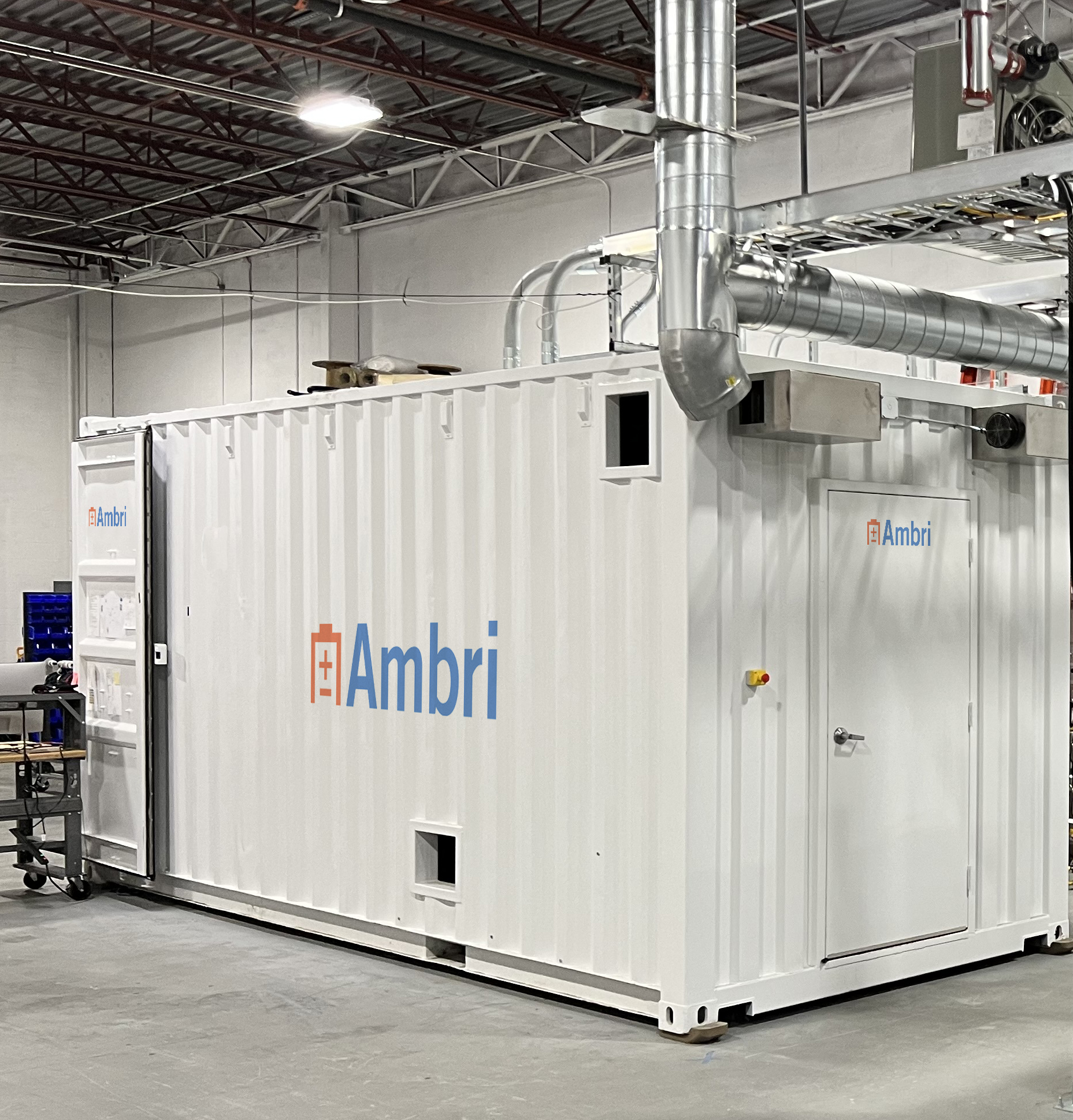Ambri is a Boston-area startup that’s building molten-salt batteries from calcium and antimony. The company recently announced a demonstration project deploying energy storage for Microsoft data centers, and last year it raised over $140 million to build its manufacturing capacity.
The company says its technology could be 30-50% cheaper over its lifetime than an equivalent lithium-ion system. Molten salt batteries can also exceed 80% efficiency, meaning that a relatively low amount of energy that’s used to charge the battery is lost to heat.
Ambri was founded in 2010 based on research from Donald Sadoway’s lab at MIT. The goal was to develop a low-cost product for the stationary storage market, says David Bradwell, the company’s founder and CTO.
The inspiration came from an unlikely place: aluminum production. Using similar chemical reactions to what’s used for aluminum smelting, the team built a lab-scale, low-cost energy storage system. But turning this concept into a real product hasn’t been so straightforward.
The magnesium and antimony-based chemistry the company started out with proved difficult to manufacture. In 2015, after continuing issues with the batteries’ seals, Ambri laid off a quarter of its staff and went back to the drawing board.
In 2017, the company pivoted to a new approach for its batteries, using calcium and antimony. The new chemistry relies on cheaper materials, and should prove simpler to manufacture, Bradwell says. Since the pivot, the company has worked out technical glitches and made progress on commercialization, going through third-party safety testing and signing its first commercial deals, including the Microsoft one.

There are still major challenges ahead for the startup. The batteries operate at high temperatures, over 500°C (about 900°F), which limits what materials can be used to make them. And moving from single battery cells, which are about the size of a lunchbox, to huge container-sized systems can present challenges in system controls and logistics.
That’s not to mention deploying a product to the real world means “dealing with real world things that happen,” as Bradwell puts it. Everything from lightning strikes to rodents can throw a wrench in a new battery system.




